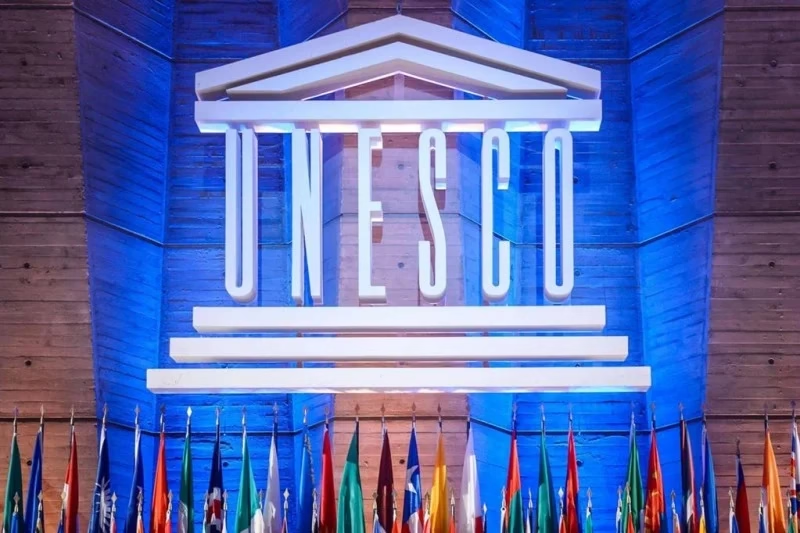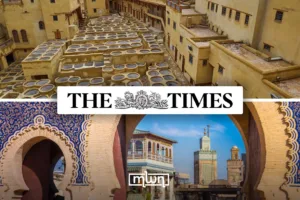Fez — The 47th session of UNESCO’s World Heritage Committee has inscribed two African cultural landscapes: Diy‑Gid‑Biy in Cameroon’s Mandara mandaand Mount Mulanje in southern Malawi, boosting the continent’s representation on the prestigious list.
Both sites exemplify cultural landscapes, a UNESCO category that recognizes the interplay between human activity and the natural environment.
Diy-Gid-Biy showcases human ingenuity in adapting to a challenging terrain, while Mount Mulanje highlights a deep-rooted spiritual and traditional connection between communities and their ecosystem.
The decisions came during the committee’s annual meeting, held 6–16 July at UNESCO Headquarters in Paris.
Cameroon’s Diy‑Gid‑Biy: Stone terraces tell centuries‑old story
Located in the country’s far north region, the Diy‑Gid‑Biy cultural landscape comprises sixteen dry‑stone archaeological sites scattered across seven villages. It has a rich history and is believed to have been inhabited for centuries, with evidence of early human settlements dating back thousands of years.
The dry-stone structures found throughout the landscape are a testament to the ingenuity and architectural skills of its ancient inhabitants.
Built between the 12th and 17th centuries, the structures — whose name means “Ruin of the Chief’s Residence” in the Mafa language — include terraces, platforms, shrines, and dwellings that mirror the spiritual bond between local communities and their rugged environment.
UNESCO cited the landscape’s “remarkable testimony” to indigenous engineering that allowed successive generations to farm steep slopes while preserving water and soil. The listing is expected to bolster conservation funding and encourage sustainable tourism in Cameroon’s least‑visited province.
Malawi’s Mount Mulanje
Towering 3,002 meters above southern Malawi, Mount Mulanje is one of the world’s largest inselbergs and holds deep cultural meaning for the Yao, Mang’anja, and Lhomwe peoples. Its unique ecosystem is home to diverse flora and fauna, including the endangered Mulanje cedar, making it a critical site for biodiversity conservation.Mount Mulanje, at 3,002 meters, is a colossal inselberg in southern Malawi.
This majestic massif holds deep cultural significance for the local Yao, Mang’anja, and Lhomwe communities. Its unique, isolated ecosystem is a biodiversity hotspot, home to many endemic species, including the critically endangered Mulanje cedar.
The mountain’s varied altitudes and microclimates create diverse habitats, supporting a rich web of life from forests to montane grasslands. Mount Mulanje is a natural and cultural treasure vital for global conservation.
The cultural landscape’s newe inscription encompasses alpine plateaus, mist forests, and sacred groves tied to ancestral rites.
UNESCO praised the mountain’s intact ecosystems and living traditions — from rain‑calling ceremonies to masked Gule Wamkulu dances — that “demonstrate an enduring relationship between people and nature.”
Malawi’s government vowed to expand no‑go zones for mining and upgrade visitor facilities in line with the listing.
Africa’s growing footprint on the World Heritage map
The dual inscriptions bring Africa’s total World Heritage sites to 108, highlighting the continent’s push for better representation after decades of under‑listing. Five African properties joined the roster this year, according to preliminary tallies from the committee’s secretariat.
Conservationists say the new status can unlock technical support and eco‑tourism revenue—but warn that both sites face climate change, deforestation, and illicit quarrying. UNESCO’s 2025 World Heritage status for sites in Cameroon and Malawi offers both hope and challenges. While promising technical support and eco-tourism revenue, experts warn of severe threats.
Climate change, deforestation, and illicit quarrying endanger these sites, jeopardizing ecosystems, historical integrity, and authenticity. Achieving lasting preservation demands sustainable strategies to combat these multifaceted issues.
UNESCO urged Cameroon and Malawi to finalise buffer‑zone regulations and community‑led management plans within two years.
What’s next?
Official listing plaques will be unveiled on‑site later this year, while national tourism boards prepare promotional campaigns spotlighting the newly crowned attractions. Official UNESCO World Heritage plaques, detailing the sites’ significance, will be unveiled later this year in Cameroon and Malawi.
This event will formally recognize these locations globally. In response, national tourism boards are preparing promotional campaigns to attract visitors by highlighting the sites’ unique cultural, historical, or natural attributes, promoting appreciation and sustainable tourism.
Heritage experts hope the attention will spur further nominations from across Africa in the 2026 cycle.
















